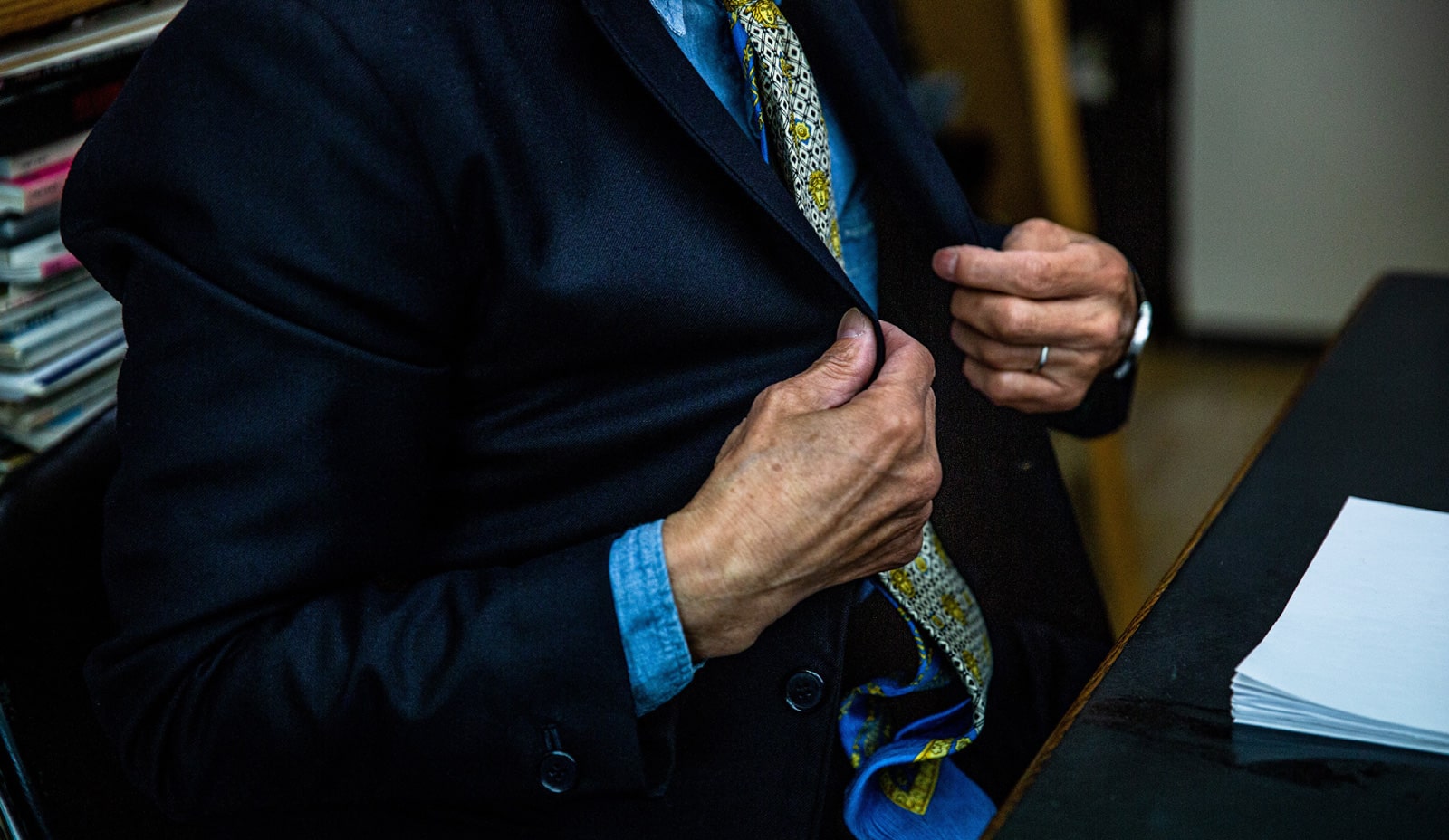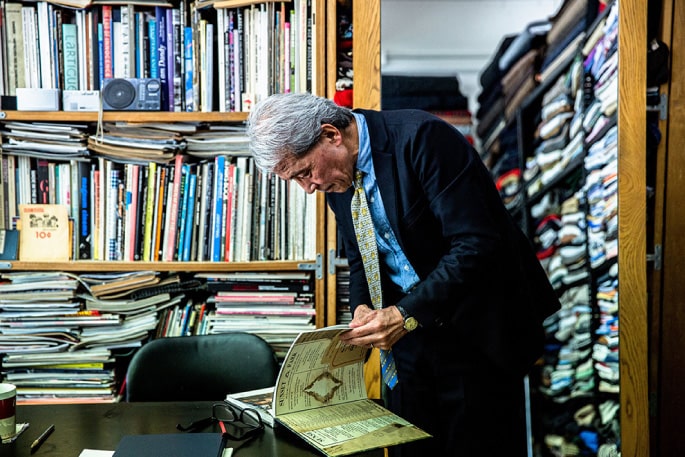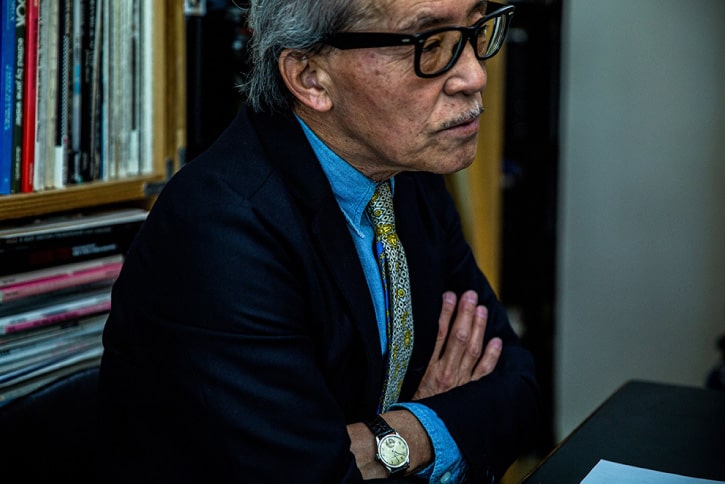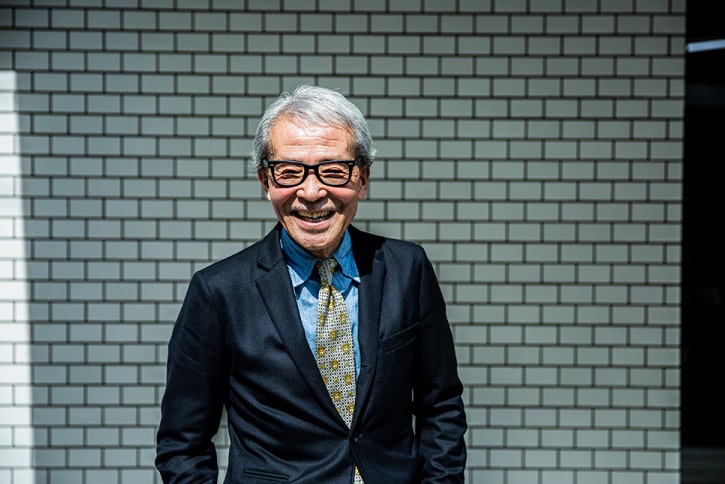

American Suit
Hisao Saito
from TUBE
2020.04.17


VOL.15
Find out little-known yet interesting facts about clothing through the words of discerning designers who have been creating
essential masterpieces for BEAMS PLUS collections.
The crucial new philosophy of BEAMS PLUS,
“Updating timeless classics for the future,” cannot be achieved without their wealth of knowledge.
vol.15
American Suit
Hisao Saito from TUBE

Hisao Saito (Designer of TUBE)Born in Tokyo in 1945, Hisao Saito joined an apparel manufacturer after dropping out a university and temporarily living in the U.S. He then established a fashion planning company in 1972 and participated in dealing with major manufacturers, while selling and distributing imported designer clothes. During the 1970s and 1980s, he also engaged in the launch of American trouser brand FARAH. After starting his own brand TUBE in 1979, Saito participated in establishing International Gallery BEAMS in 1981 as an adviser of BEAMS Co., Ltd. Since then, he has been working with various brands and stores as an adviser or director. With his half a century of commitment to men’s fashion scene, he is now known as one of the leading pundits of the Japanese apparel industry.
It was an invention that made
a global impact
with
the revolutionary idea
of simplification

The characteristic designs of
American-made suits were created
by industrially producing
European-style suits.
“As you know, America is a country founded by European immigrants. Therefore, fashion and styles from European countries such as the U.K., Germany and Spain had a strong impact on the American society by around the 1930s. So-called American suits were first developed after the period, with creative and rational designs to be mass-manufactured.
Suits manufacturing usually requires a number of complex and technical processes such as careful hand ironing to stretch or make a crease on the fabric and accurate sewing to make the product not just look nice, but also come with three-dimensional design for better mobility. To eliminate such intricate processes, American suits were adeptly designed in a simple pattern. So that even less-experienced artisans can sew it together. And that is the reason why many U.S. clothes - from suits to jeans to workwear - are designed rectilinearly.”


“Subsidiary materials such as interlinings, sleeve wadding and shoulder padding were also eliminated. So, American-made suits weigh lighter than European-made ones. And U.S. suits have a rectilinear, loose fitting silhouette to cover the wearer’s body shape, while European suits are designed in a constructive manner. I think some of the characteristic features of American suits including the natural shoulder, the boxy silhouette and patch pockets were developed in such simplifying process.
I mean, American people regarded suits as one of their industrial products and streamlined the manufacturing processes. It may sound badly, but simplification is inevitable for technological development and truly essential for the advancement of the fashion industry. I love U.S.-made clothes because of the rationalized designs.”

“American suits were once completed as a fashion item after having experienced a great development between the 1950s and 1960s. The brand theme of BEAMS PLUS is ‘America from 1945 to 1965,’ and it was definitely the golden period of American-made suits. The whole country enjoyed the postwar economic boom and everything including suits was produced and consumed on a large scale. Although quite a few unnecessary stuff was also created during the affluent period, such pointless things sometimes generated interesting ideas and different points of views that led the birth of youth culture. Along with famous stars such as Marlon Brando, James Dean and Elvis Presley, elite students and the Ivy leaguers first shaped the culture.”


“However, the Ivy leaguers didn’t often wear suits. Because they were usually in towns with a lot of students, they could go anywhere in a sweatshirt, cotton pants and sneakers. But, obviously, there were some formal occasions that required them to smarten up. I’ve heard that they wore a suit only to such formal events like a church service. So, I don’t think they owned many suits.”

“Then, who actually wore a suit? It was business people known as ‘old boys.’ They were mainly ex-Ivy Leaguers who worked in the East Coast cities such as New York City. Brands like Brooks Brothers and J.PRESS were their favorites. On the other hand, many types of cheaper suits were made for who wanted to dress like the ex-Ivy Leaguers and white-collar workers. As I said before, those suits were designed for mass manufacturing and could be made without any advanced skills. A lot of store brands and mail order companies therefore designed their own suits, and their products were accepted by people in various generations. Such mass-produced suits looked like proper ones, but the quality difference was obvious to some people. Although each manufacturer took so much effort to make it look like a proper suit, it looked somehow dull and the silhouette was not as smart as the original one.”

The experience of pondering
over true authenticity
made who I am now.
“For me, the most representative American suit is the gray one made with wool tropical fabric. Though navy suits are more familiar to Japanese people, American guys don’t wear it often. Navy is associated more with blazers for them. I prefer a jacket with a three-button front with the top and bottom buttons undone, or the one with a three-roll-two front. I actually love three-roll-two front models and remember that J. F. Kennedy used to wear it often. And there are visible stitches around some parts of an American-made suit. It requires advanced skills to hide stitches like jackets made in Britain or Italy, so stitches on U.S.-made suits were just visible because each product was sewn with a sewing machine. I think this clearly shows the fact that streamlining was most important for America’s suit manufacturing.
I would wear a white or light blue shirt under my suit jacket. Though matching a button-down shirt is definitely the classic style, a tab collar shirt goes also well if you want to add some sophistication to your look. A tie with a small pattern would be my choice for this style. I saw a look with the tie when I was young and still remember it. And a pair of loafers, of course. It is my ideal American suit style.”



“I became interested in fashion soon after I enrolled in high school. I was wearing something like the Ivy style around that time, but one day, one of my stylish school seniors said to me that the clothes I wore were all fake (laughs). I know it’s not very polite to call somebody’s clothes fake, but it’s true that I wore low quality clothes because I wasn’t well-off. He told me that A brand called VAN made authentic clothes and I should visit Teijin Men’s Shop in Ginza because they carried many items designed by the brand.
So I went to the store, but couldn’t really tell the difference between their clothes and mine. However, one of the salespeople looked so sophisticated and he was wearing a baby cord lane jacket and matching pants. I then purchased the same items as my first suit. It was in the spring of the year of 1962, I was probably 16.”

“A few years after that, however, people around me started to say that VAN was not authentic, too (laughs). It might be an inappropriate expression, but they wanted to say that authentic Ivy clothes should be made in the U.S. I got so much confused about their words to deny a brand I trusted and admired after only few years, and really pondered over what made the authentic clothes different and what the authentic clothes were. I thought about those things a lot more than any young people who sported so-called Ivy clothes around that time. And the experience made who I am today.”


Changing according to
the times is necessary
even for traditional items.
“After graduating from a fashion college, I moved to the U.S. in 1967. But the country was completely different from what I had imagined. Although I wanted to see ‘true’ Ivy looks and American traditional clothes, people in the U.S. no longer wore them because of the passing of both time and trends. Instead, Radical hippies were everywhere in the towns. I was shocked, of course, but at the next moment, my primary interest shifted to whether I should buy a pair of flare pants (laughs).”

“Because American-made clothes were changed like that, I once lost my interest in it. Also because I’ve always been a person who follows every new fashion fad, I got interested more in European fashion scenes. When I visited the U.K., however, I realized apparel stores in the country carried sweaters that looked similar to what I had seen at traditional clothing stores in the U.S. It reminded me that the American traditional style has its roots in European fashion. I thought American-made clothes were authentic, but the true authentic designs were brought from somewhere else. So, I again found the American traditional style profound and fascinating.
On the other hand, some suit designs created in the U.S. made a pretty big impact on European countries, the originators of suits. The Italian classic style in the mid-1980s was created based on American-made suits by updating it with Italian artisan skills and trends of the time. Similar things happened also in the U.K. and France. Being mixed with various elements, traditional items like suits have been changing the shapes according to the times, while maintaining the virtue and heritage. I think it is also a way how traditional clothes should be. Everything must change, otherwise it will feel stuffy and die from choking.”

“I’ve been working for the fashion industry for about 50 years, and I still am fascinated by American clothes but from a different point of view from what I had when I was young. As I said before, American people invented the way to simplify the manufacturing processes and enthusiastically promoted the streamlining. And, eventually, they completely changed the global fashion scene. The period between the 1950s and 1960s is the time that symbolizes how great American-made clothes are, and the country was definitely one of the most outstanding in the world at that time.”

- Writing : Naoyuki Ikura
- Photography : Kensuke Ido (BEAMS CREATIVE INC)
- Illustration : Naoki Shoji
- Design and Development : maam.inc
- Edit and Text : Masayuki Ozawa
CHECK SUIT
JACKET
Color : GREEN CHECK / Size : S, M, L / Price : ¥49,000+tax
TROUSERS
Color : GREEN CHECK / Size : S, M, L / Price : ¥28,500+tax

The products shown in this article are
available at BEAMS PLUS stores.
vol.15
American Suit
Hisao Saito
from TUBEvol.14
BACKPACK
Takao Fujimoto
from STANDARD SUPPLYvol.13
5 Pocket Denim Pants
Kenichi & Koji Shiotani
from WAREHOUSEvol.12
Luggage Wear
Setsumasa Kobayashi
from .....RESEARCHvol.11
Leather Wallet
Daisuke Motoike
from MOTOvol.10
Fatigue Pants
Daiki Suzuki
from ENGINEERED GARMENTSvol.09
Tie
Kenichi Kusano
from KENNETH FIELDvol.08
Tote Bag
Shinshu Kosuzume
from BRIEFINGvol.07
Coverall Jacket
Takeshi Ohfuchi
from Post O'Allsvol.06
Balmacaan Coat
Shinsuke Kojima
from KAPTAIN SUNSHINEvol.05
Western Shirt
Yutaka Goto
from REMI RELIEFvol.04
M-51
Kimitoshi Chida
from sage de cretvol.03
Sweat
Satoshi Suzuki
from LOOPWHEELERvol.02
Open Collar Shirt
Hirofumi Yamashita
from MOJITOvol.01
Blazer
Jack Carlson
from ROWING BLAZERS





































